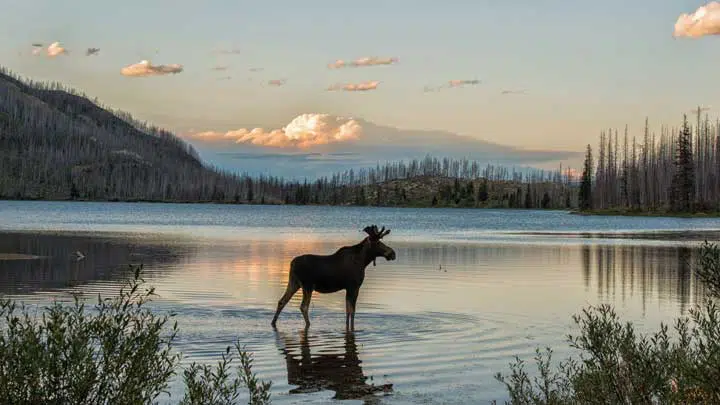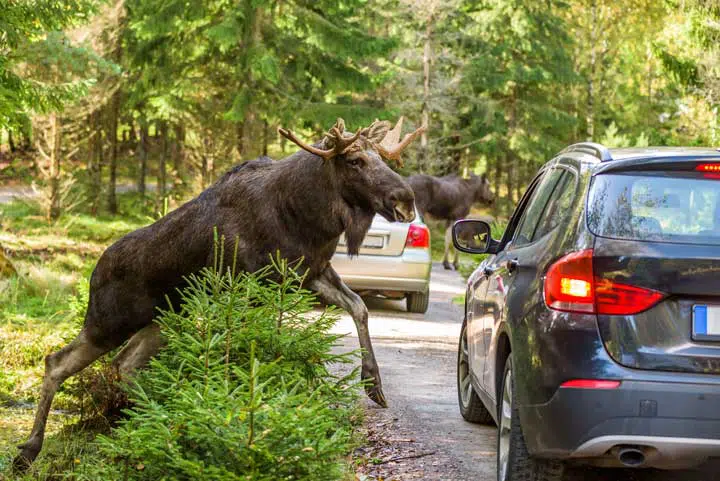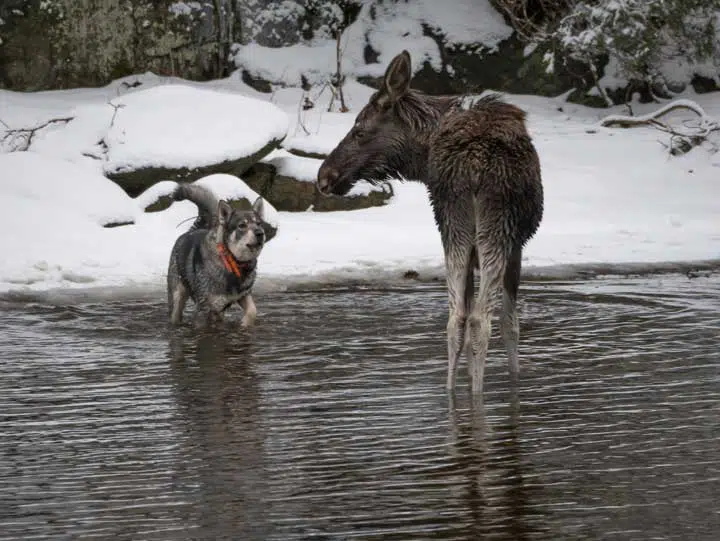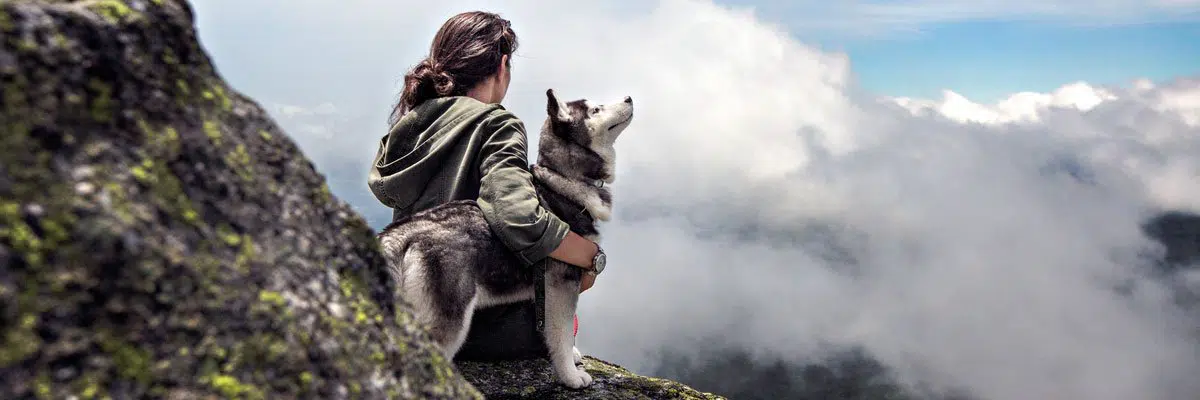If you want to hunt, camp, or hike in parts of Alaska and Canada then it’s important you familiarize yourself with moose attacks. Moose are beautiful wild animals and seeing one is a unique experience, but they can be dangerous. Standing on average over six feet tall, weighing up to 1,800 pounds (816 Kg), and capable of running 35 miles (56km) per hour, you don’t want to be on the receiving end of their tempers. But what about bears, you ask. Statistically speaking, moose injure more people than bears do in Alaska every year. This article shares some best practices of how to interact with these amazing animals and live to tell the tale.
A Walk in the Woods
Imagine this scenario with me. You’re walking through the Alaskan backcountry in early summer. Your boots crash through the undergrowth, thick sweat soaks your collar and face, and mosquitoes the size of small birds circle around your head. You don’t mind. This is the vacation you’ve been looking forward to. No room service, only what you can provide for yourself or what you can ruck in on your back. The smell of fresh water floats in on a refreshing breeze. As you push through a clump of trees, the lake reveals itself. The view makes the eight hours of hiking all worth it.
Today, you’ll be catching your own dinner from the lake and preparing it yourself with a handful of ingredients secured inside your pack. Cell signal is an after-thought. The only tweets you’ll be hearing will come from birds nesting in the towering trees. You pause to drink and get your bearings when, suddenly, a twig snaps loudly to your left. Slowly turning, you see a full-sized bull having a long drink from the lake about forty yards away. Like you, he’s thirsty, but he doesn’t seem to have noticed your presence. You take a moment to marvel at it.

Let’s pause here and talk more about moose versus bears in Alaska. If you venture north, you may be more preoccupied with looking out for bears. You watched The Revenant and you’re hoping to keep your knowledge of bear attacks academic. While you should always be aware of bears, their surroundings and behaviors, moose constitute a large threat themselves. Moose wound 5-10 people a year in Alaska, and there are three moose for every bear in Alaska. This means you’re more likely to encounter a moose than a bear.
A Whole lot of Fur
The first thing you’re liable to notice when looking at a moose is how massive these animals are. Whether you’re dealing with a bull, a cow, or a calf (depending on the time of the year), you don’t want to get in their way or ignore their warnings. When you encounter an animal like this, it’s best to remember that no one owns the forest and that we need to interact respectfully with nature–the forest belongs to everybody, that includes the moose. As mentioned above, adult bulls can grow to weigh up to 1,800 pounds. Cows tend to top off around the 900-pound (410 Kg) mark. Even those adorable little calves weigh more than any NFL defensive tackle. Moose can live up to 20 years (though rarely beyond 16) and cows give birth many times over their lives. Bulls are recognizable by their large antlers, which can grow to 6 feet (1.83 meters) wide.
You’re glad to see this particular bull moose (a 5 foot-tall), hasn’t seemed to notice you). The juicy grasses growing at the edge of the lake have grabbed his attention and that big appetite. This is a good sign. Moose are herbivores and take advantage of the lush foliage of summer. In the winter, moose eat large amounts of tree twigs. Moose tend to eat in “hedge” line 6-8 feet off the ground, preferring this to bend down to the ground whenever possible. They also like to be in and near the water. That’s right, you read right. The first mistake you could make when seeing a moose is to assume that they aren’t terribly mobile creatures. Wrong. They can trot for long distances at 20 miles (32 km) per hour clip and are very adept swimmers. Moose can swim for miles and even swim underwater for longer than 30 seconds if need be.
Food for thought, not for moose
Moose are not aggressive toward humans, most of the time. But there are some reasons why they may act aggressively toward humans. The first reason is the most obvious because people harass them or get too close to them. Give moose a wide birth when you encounter them in the wild, at least 25 – 30 yards. Don’t throw objects at the moose or block its path, this is a sure way to escalate a situation. If there’s only one way in and out of the area, that moose has the right-of-way. Keep your distance, let the moose move on in its own time. You want to photograph this majestic beast of the north. Who wouldn’t? Just stay 25 yards (20 meters) away and put that zoom to use. No photograph of a moose is worth getting trampled over.
The same rule applies for if you encounter a moose while driving. They have no concept of your commute or your time-crunch, they’re going to cross the road at their own pace. Collisions with moose are most common during the winter because commuting times overlap with dusk and dawn, the times of day when moose are most active. Many communities track the “hot spots” where moose cross the most. These should be consulted by people traveling during the winter. Hitting a one-and-a-half-ton moose while traveling at any speed can be lethal to you. Not to mention what kind of damage a body like that can do to your plastic grill and bumper, to say nothing of your engine block. Keep your eyes open while driving, check both sides of the road, and slow down when you see a moose. Be especially vigilant at nighttime. Whatever you’re doing, it can wait until that moose leaves. Better late than never!

While the calves may seem cute and harmless, keep the following in mind. Where there are calves, there is probably a cow. As with bears and their cubs, never, ever put yourself between a cow and her calves. Cows give birth in the spring and are weaned during the fall; over which time calves may have grown up to ten times larger than their birth weight. If you find yourself looking at a lone calf, give them the same birth you would an adult moose and keep aware of your surroundings. Stay away from calves, especially around late spring and summer.
Bulls, on the other hand, tend to be most aggressive during the rut, and are their most territorial from September to October. This is the time of year that bulls fight one another, something that may astound you on television, but you wouldn’t want to catch the live show.
Dogs and moose, as a rule, don’t get along. Remember that moose are prey that can’t and won’t take the time to differentiate between your house-trained pooch and a wolf. Unleashed dogs, particularly dogs with no familiarity with the outdoors, may bark and approach the moose, something that’s bound to get it riled up. If you aren’t confident your dog can handle itself, don’t bring it along.

Okay, so what if you don’t have a dog with you and a moose appears to be approaching you, begging for food. No matter how hungry that moose looks, don’t feed it. For one, it’s illegal in Alaska. Some moose may have been fed by humans and may have become dependent on it, but that doesn’t mean you should try to appease them with your bag of granola. Besides, even if you fed the moose everything you had, it’s probably just gotten started. The moose is also likely to attack if you try to feed it, anyway. Best not to do it. Do you really want to be the person who tells a moose there’s no more food? Didn’t think so.
Also keep in mind that moose, like people, can be angry because of sickness or just a plain bad day. In the winter, moose are hungry and travel long distances through tall snowdrifts. Couple that with being covered in tics and the cold, you’ve got a recipe for a grumpy moose. Moose can also be affected by brain worms, parasites that can make moose less afraid of humans.
Signs of Aggression to Look For
You’re back on that lakeshore in Alaska, the bull is still eating and drinking. That’s a good sign. Here are seven signs of aggressiveness you can look for when interacting with deer. Picking up on these signs can help you avoid aggressive moose or let you know when it’s time to walk away.
- They stop eating and stare at you.
- Urinates.
- Whips its head back, like a horse.
- Ears lay back (like your dog or cat).
- Long hairs on the hump raise up.
- Licks or smacks its lips, clicks its teeth.
- Shows the whites of its eyes.
Consider all of these warning signs to pay attention to. Moose may very well be trying to tell you to clear off or to stay away, but if you’re distracted while trying to creep close for a picture—then you may not notice these happening. If you do feel unsafe, you can always run. Moose will not feel compelled to chase you down. Unlike wolves or bears, running is always an option with moose.
How To Survive a Moose Attack
If a moose does charge, you have several options as to what precautions you can take. Knowing what to do if they become aggressive may save you from serious injury or worse. These are large, powerful animals that can kill you. Like bears, moose will often bluff a charge. But this isn’t poker night at your buddy’s house. Never call a moose’s bluff. If a moose starts to charge, you can always run away. Moose, unlike predators, lack a chase reflex and therefore are not likely to chase you down. If you have a clear exit, start hoofing it for the nearest tree, building, fence, or solid structure that you can shelter in or behind. Jumping in water is not the best idea, because of moose’s aforementioned swimming skills, but might blunt the severity of an attack. Bear spray can also be effective on moose.
If the moose charges, it’s likely to knock you down to the ground. Curl into a ball in order to protect your head and vital organs.

After knocking you over, the moose is likely to kick and stomp on you. All 1,500 pounds (680 Kg) coming down right on you. Don’t fight back, this will only make the moose more aggressive. Once you are curled up on the ground, don’t move until after the moose has already left the area. If you get up too early, it may renew its attack and you won’t be so lucky.
Prepare ahead of time, enjoy the trip
Hopefully, you never have to use any of these tips. While you should prepare for these worst-case scenarios, remember that if you are respectful toward nature, it often pays the favor back. Moose have no interest in attacking you unless they’re provoked, so be respectful to them and their space. Use common sense, be aware of your surroundings, inform yourself about moose movements in the area that time of year. If you do that, then you and that moose can share that Alaska lake with no problem.




